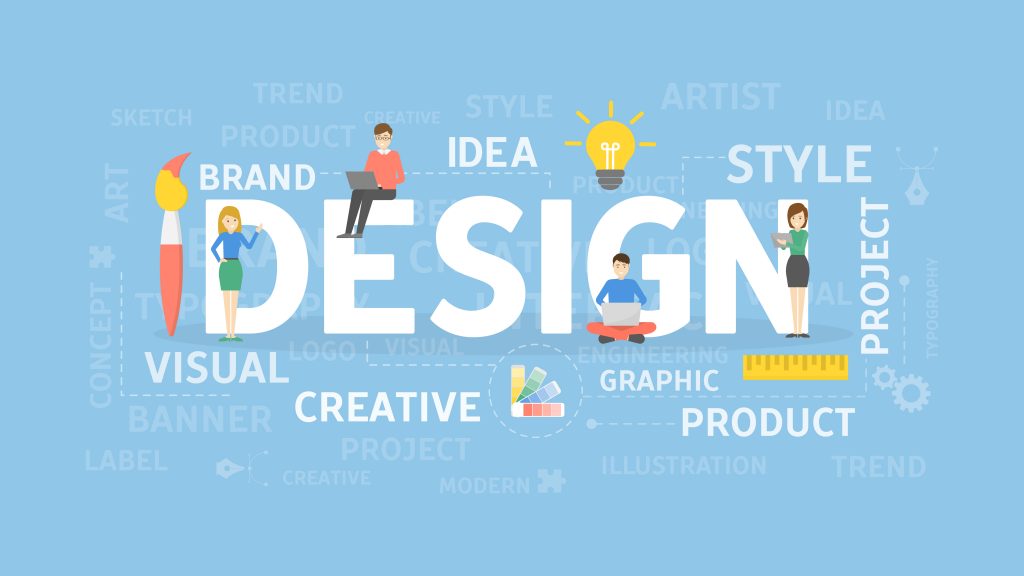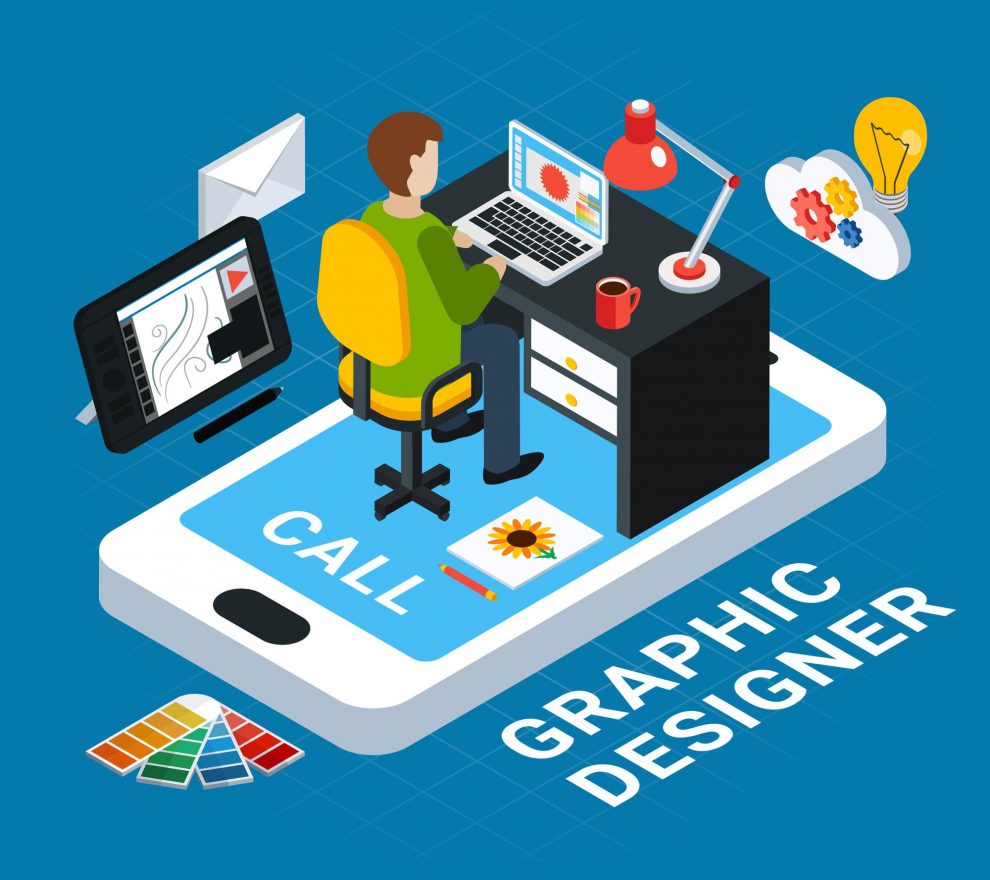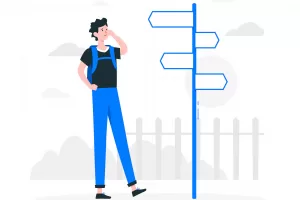Generative AI has ushered in a new era of graphic design in the United States. This transformative technology is revolutionizing the creative process, offering designers a myriad of tools and opportunities to enhance their work. In this blog post, we will explore how Generative AI is reshaping graphic design in the US and how it influences design quality, efficiency, and creativity.
In the dynamic landscape of the United States, startups have become the heartbeat of innovation and entrepreneurship. These emerging ventures, often characterized by their fresh ideas, agility, and ambition, play a pivotal role in shaping the nation’s economy. From the bustling tech hubs of Silicon Valley to the vibrant entrepreneurial scenes in cities like New York and Austin, American startups are at the forefront of groundbreaking technologies, novel business models, and transformative solutions.
The world of graphic design has experienced a remarkable transformation in recent years, thanks to the advent of Generative Artificial Intelligence (AI). This revolutionary technology has pushed the boundaries of creativity and efficiency in the field, offering designers in the United States and beyond new tools and techniques to create stunning visuals. In this blog post, we will delve into the influence of Generative AI on graphic design in the US and explore how it is reshaping the industry.
The Rise of Generative AI in Graphic Design
Generative AI, a subfield of artificial intelligence, involves the use of algorithms and machine learning techniques to generate content autonomously. In graphic design, it has proven to be a game-changer by automating repetitive tasks, enhancing creativity, and producing stunning visual content.
Automating Mundane Tasks:
One of the most significant impacts of Generative AI in graphic design is the automation of routine and time-consuming tasks. Tasks like resizing images, selecting color schemes, and formatting layouts have traditionally consumed a significant portion of a designer’s time. With AI-powered tools, these processes are now handled swiftly and accurately, allowing designers to focus on more creative aspects of their work.
Endless Design Possibilities:
Generative AI enables designers to explore a virtually infinite range of design possibilities. By inputting parameters and preferences, designers can generate variations of a design concept within seconds. This not only speeds up the design process but also encourages experimentation, resulting in more innovative and unique designs.
Enhanced Image Manipulation:
AI-driven image editing tools like Adobe’s Photoshop and Lightroom have transformed the way graphic designers work with images. These tools use AI algorithms to improve image quality, remove imperfections, and even generate entirely new visuals. This has opened up new horizons for graphic designers, allowing them to work with low-quality images and transform them into high-quality, professional-grade graphics.
Personalization and Targeted Marketing:
Generative AI has also revolutionized the way businesses approach marketing and branding. Designers can now create personalized content at scale, tailoring visuals to individual user preferences. This level of personalization not only enhances user engagement but also contributes to the overall success of marketing campaigns.
Artistic Collaborations:
Generative AI has paved the way for unique collaborations between humans and machines in the realm of art and design. Artists and designers in the US are experimenting with AI to create captivating and thought-provoking pieces that challenge traditional notions of creativity and authorship.
Efficiency and Cost Savings:
The use of AI-driven design tools has led to increased efficiency in design workflows. This, in turn, translates to cost savings for businesses and clients. Design projects are completed more quickly and with fewer resources, making graphic design services more accessible to a wider range of clients.
Challenges and Ethical Considerations

While Generative AI has undoubtedly transformed the graphic design landscape in the US, it also presents a host of challenges and ethical considerations:
Intellectual Property and Copyright Concerns:
With AI capable of generating vast amounts of content, there are increasing concerns about intellectual property and copyright issues. In this context, determining ownership and rights over AI-generated designs can be a complex endeavor, especially when multiple AI algorithms and human input are involved. Graphic designers and businesses must navigate these legal challenges to protect their work and respect the rights of others.
Lack of Human Touch and Authenticity:
While AI can assist in generating designs, some argue that it lacks the human touch and authenticity that make designs truly unique and emotionally resonant. Authenticity and human creativity are qualities that can be challenging to replicate with AI, leading to concerns about a potential loss of emotional connection between designs and their audiences.
Accessibility and Inclusivity:
The use of AI in graphic design tools may inadvertently exclude individuals with disabilities. Design generated by AI might not always adhere to accessibility standards, making it essential for designers to ensure that AI-generated content is inclusive and usable for all.
Dependency on AI:
Over Reliance on AI tools can hinder the development of designers’ core skills and creativity. There is a risk that designers may become overly dependent on AI-driven solutions, which could compromise their ability to think critically and innovate independently.
Data Privacy and Security:
The use of AI in graphic design often involves the collection and analysis of vast amounts of data, including user preferences and behavior. This raises concerns about data privacy and security, as designers and businesses must protect sensitive information from potential breaches and misuse.
Environmental Impact:
The computational power required for AI training and operation can have a significant environmental impact. Training deep learning models can consume substantial energy resources, contributing to carbon emissions. Designers and tech companies need to consider the ecological footprint of AI-powered design processes and explore ways to mitigate their environmental impact.
Bias and Diversity:
AI algorithms can inadvertently perpetuate bias present in training data, leading to biased design outputs. It is essential for designers to be aware of these biases and strive for diversity and inclusivity in design. Additionally, the lack of diversity in the development of AI systems can lead to underrepresentation and bias in AI-generated content.
Explore Cutting-Edge Technology – “Automated Bug Detection and Code Generation with Generative AI“
Startups in the United States harnessing Generative AI for graphic design
Runway ML:
This San Francisco-based startup specializes in creative tools powered by AI. Runway ML offers a platform that allows graphic designers and artists to experiment with Generative AI models for various creative tasks, including image generation, style transfer, and text-to-image synthesis. Their user-friendly interface and accessible API have made it a popular choice for creative professionals in the US.PaintsChainer:
This startup, headquartered in Silicon Valley, focuses on automating the process of coloring black-and-white line art. PaintsChainer’s AI-driven system uses deep learning to understand and predict colors, making it a valuable tool for illustrators and comic artists. By simplifying the coloring process, PaintsChainer enables artists to save time and experiment with different color schemes.Run Studio:
Run Studio, located in Los Angeles, leverages Generative AI to create visually stunning videos and animations.Their AI-powered tools not only assist filmmakers, animators, and video editors in generating captivating visual effects, motion graphics, and animations but also save time and enhance the overall quality of video content.Designify:
Founded in San Francisco, Designify is a startup that provides an AI-driven graphic design platform for businesses and marketers. It streamlines the design process by automating the creation of marketing materials such as social media posts, banners, and advertisements. Users can input their branding preferences, and the platform generates design options that align with their brand identity.GANPaint Studio:
This Berkeley-based startup offers a tool that empowers designers to interactively modify images using Generative Adversarial Networks (GANs). GANPaint Studio allows users to manipulate and edit images in real-time, making it a valuable resource for graphic designers seeking to experiment and fine-tune their creations.Snappa:
While headquartered in Ottawa, Canada, Snappa has gained significant adoption among US startups and businesses due to its expertise in simplifying graphic design for non-designers. Surprisingly, despite its Canadian origin, Snappa has cultivated a substantial user base in the United States. This achievement is attributed to its utilization of AI-driven templates and a user-friendly interface, which enables users to rapidly create social media graphics, blog post images, and a variety of other visual content.GeekyAnts Inc:
Formerly based in Bangalore, India, GeekyAnts Inc. is now an innovative tech startup operating in the United States. They are renowned for their contributions to design and development tools, with a global presence and collaborations worldwide, including the US. Notably, they’ve pioneered advancements in technologies like Flutter and React Native, impacting mobile app and web design. GeekyAnts Inc.’s expertise indirectly influences designers and developers globally, reflecting the tech industry’s global impact on graphic design practices, even within the United States.
Specific tools and platforms that leverage Generative AI in Graphic design
DALL-E 2:
DALL-E 2 is an advanced version of the original DALL-E, developed by OpenAI. It’s designed to generate realistic images from text descriptions. This means you can provide textual prompts, and DALL-E 2 will create visual representations based on those descriptions. It’s a groundbreaking tool for artists and designers looking to bring their textual ideas to life in the form of images.Midjourney:
Midjourney is a versatile creative tool that utilizes Generative AI to generate text, images, and 3D scenes. It allows designers and artists to experiment with various mediums and create unique content. Whether you need text for a project, want to generate images for inspiration, or even explore 3D scenes, Midjourney can assist in the creative process.Generative Art Bot:
Generative Art Bot is an AI-powered tool that specializes in generating abstract art based on text descriptions. Artists and designers can input their artistic vision through text prompts, and the bot will generate abstract visual art that aligns with the provided descriptions. This tool encourages exploration and creativity in the realm of abstract art.VQGAN+CLIP:
VQGAN+CLIP is a powerful combination of generative models. It utilizes the CLIP model (Contrastive Language–Image Pretraining) for image understanding and combines it with VQ-VAE-2 for image generation. This tool allows users to generate images that match the textual descriptions or concepts they provide. It’s highly flexible and enables the creation of visually striking images inspired by text or other images.Neural Style Transfer:
Neural Style Transfer is a technique that uses deep learning to transfer the style of one image to another image. It allows designers to apply the artistic characteristics and style of one image onto another, resulting in unique visual compositions. This technique has applications in creating visually appealing graphics and artworks by merging different styles and aesthetics.
Conclusion
Generative AI has ushered in a profound transformation in the realm of graphic design in the United States. It has armed designers with a myriad of novel tools, significantly improving efficiencies, and opening doors to previously uncharted creative possibilities. However, it’s imperative to recognize that this technological evolution also ushers in its own set of challenges and ethical considerations. As the graphic design field increasingly integrates AI, it must grapple with complexities, including intellectual property rights and the potential for bias in AI-generated content. Nonetheless, despite these formidable challenges, the potential for AI to profoundly influence graphic design in the US is immense. With responsible use, AI stands poised to shape the industry in unprecedented ways.

























